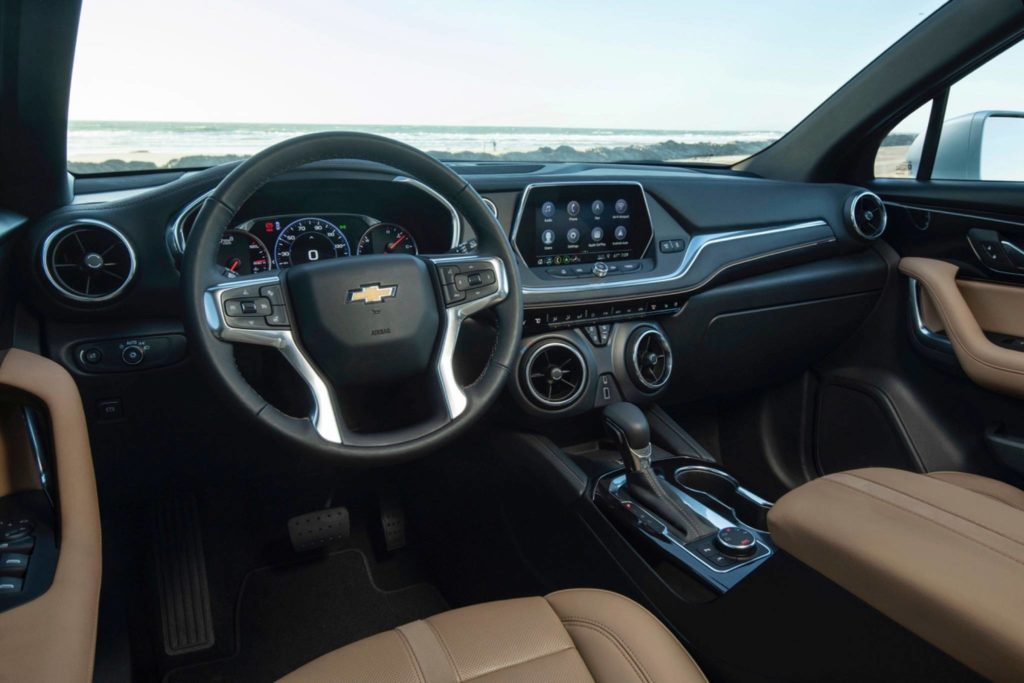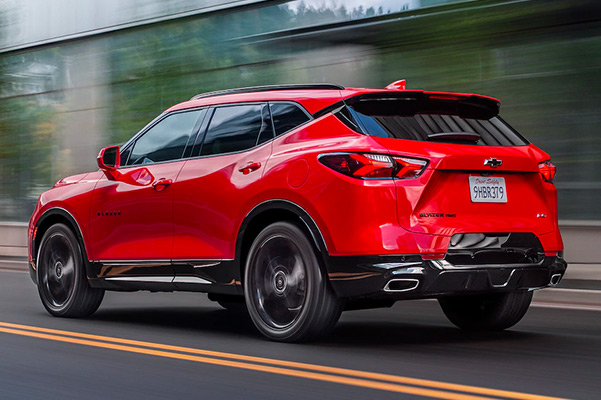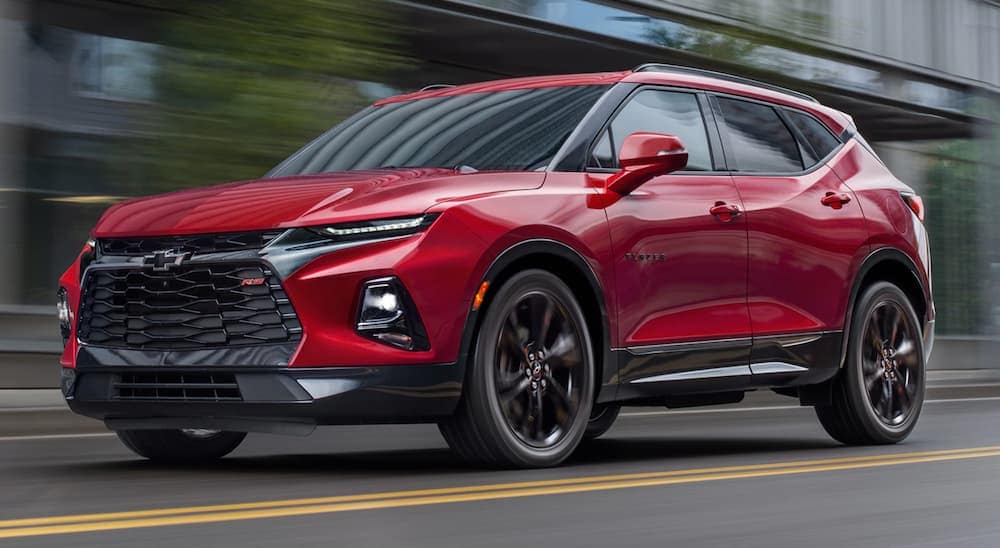By Shari Prymak
The Chevrolet Blazer nameplate can trace its roots back many decades when it first served as a rugged, two-door, body-on-frame SUV. It was built to take on the utilitarian off-roaders of the world such as the Jeep Wrangler and Ford Bronco. After a near two decade hiatus, Chevrolet reintroduced the Blazer to the market as a thoroughly modern crossover with a focus on mainstream appeal rather than off-road chops. Old-school fans may question the use of the Blazer nameplate for a conventional crossover rather than a dedicated off-roader, but crossovers sell, and the Blazer appears to have the goods that the buyer demographic is looking for.
The Blazer sits on the larger end of Chevrolet’s crossover lineup, just above the Equinox and subcompact Trailblazer. It’s a spacious vehicle with plenty of room for adults to stretch their legs and a large cargo area. The rear seats can slide on a track for added passenger or cargo space depending on the need. The seatbacks can easily fold flat from both the rear seats and cargo area with pull release handles. The cargo management system with the moveable partition works especially well for managing items. For those content with a two-row crossover, this is about as practical as they come.

The Blazer is just as handsome as it is practical. The sharply styled headlights and aggressive design give it a rather sporty, upscale look, especially when compared to its bland showroom mates like the Equinox and Traverse. The interior continues the sporty theme with a few design elements borrowed from the Camaro. It’s a functional space, but a little low rent given the Blazer’s price point. The round air vent bezels used to control the temperature are a bit of novelty, but work well enough. The infotainment system uses a well-designed interface with a straightforward menu structure. The system includes subscription-based 4G LTE Wi-Fi for connected devices as well as Apple CarPlay and Android Auto capability.
Chevrolet is pitching the Blazer as one of sportier options in the crossover segment. Even though my test car came with a number of sporty garnishes as part of the RS treatment, there isn’t anything especially sporty about the way it drives. It’s just a smooth, competent, daily workhorse ideal for long commutes and urban congestion. The active safety features and HD cameras work well for avoiding obstacles or pedestrians while maneuvering. One unique feature is the available rear camera mirror which provides a full rear camera feed in the rearview mirror perfect for when the cargo area is obstructing the view out back.
The Blazer is available with three drivetrains depending on the trim level. The base LS trim comes equipped with a rather feeble 2.5L 4-cylinder engine with a 9-speed automatic transmission and front-wheel drive that few will be interested in. The LT and True North trims replace the 2.5 for a more powerful 2.0L turbocharged engine with available all-wheel drive. The RS and Premier trims get a naturally-aspirated 3.6L V6 engine with an ample 308 horsepower and 2,000kg towing capacity. Rated fuel economy is roughly the same regardless of which engine you go with. I averaged 12.0L/100km in mixed city and highway driving with my V6-equipped RS tester.

The midsized crossover segment is a competitive one, highlighting the importance of offering a value-packed package. Unfortunately, it is here where the Blazer falls short of its rivals. Pricing starts at $35,198 for the LS trim with the underpowered 4-cylinder, front-wheel drive, and no active safety technology. Stepping up to the $42,198 True North model resolves most of those issues, but still falls a bit short on features. Optioning out the more desirable RS or Premier trim with the V6 engine can push the price tag well past $50,000 which is approaching or matching full-on luxury SUVs.
Chevrolet has done a commendable job reinventing the Blazer as a modern crossover. Although it checks off most of the boxes consumers are looking for, the pricing is just too high to justify when competing midsized crossovers, such as the Nissan Murano, Honda Passport, and Hyundai Santa Fe, can be had for a substantially lower price. Chevrolet will need to include more features into the lower-priced trim levels or offer attractive purchase incentives to make this a more desirable option. The Blazer is an attractive package, but value for money is king, and right now other crossovers just offer more of it.

